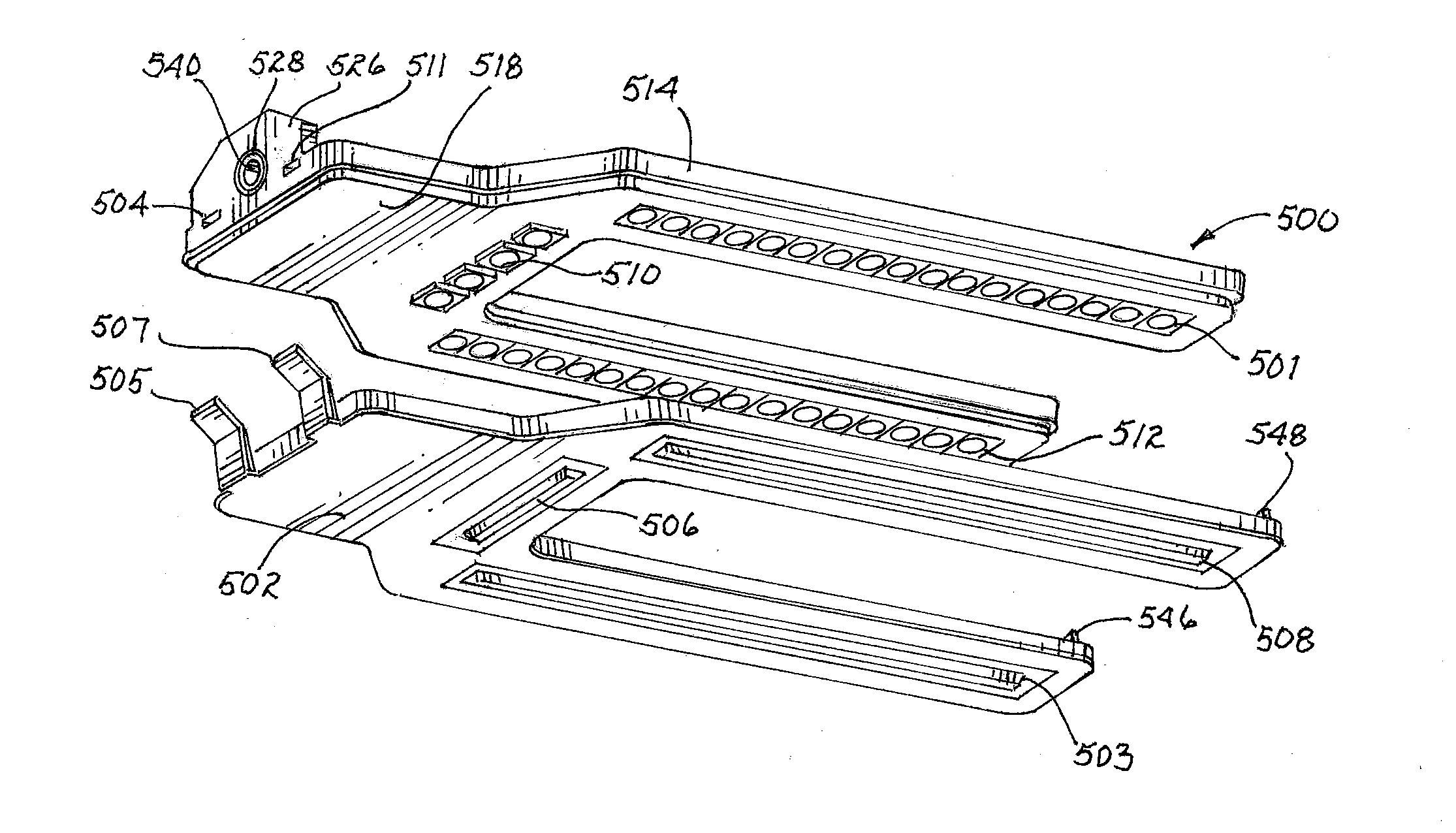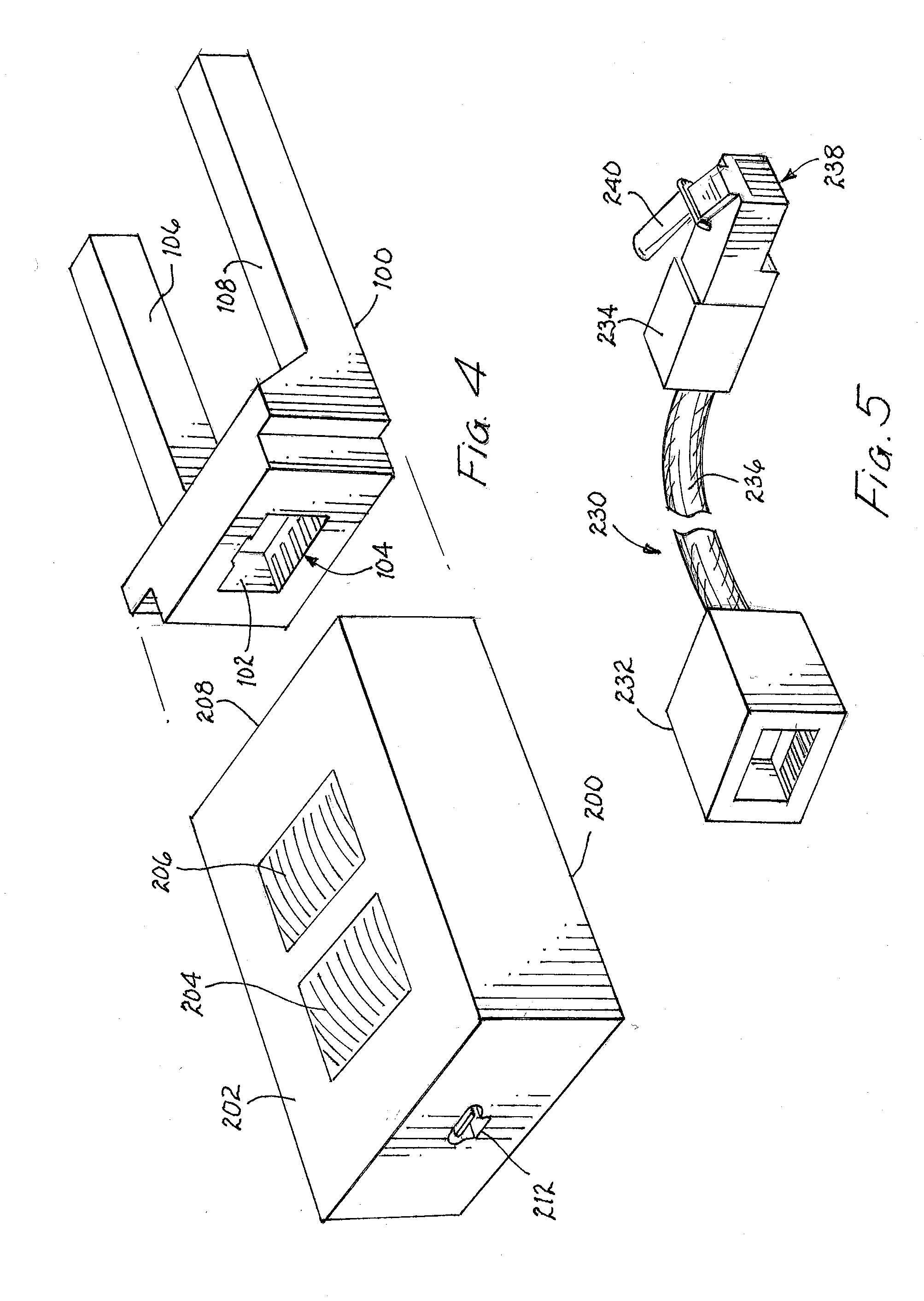Medical imaging device
a medical imaging and device technology, applied in the field of medical imaging, can solve the problems of inability to easily see subcutaneous veins on patients, variations in skin tone, body fat and other physical characteristics, and devices are not always effective in locating veins, etc., and achieve the effect of simple and rapid exchange of light heads and minimal configuration
- Summary
- Abstract
- Description
- Claims
- Application Information
AI Technical Summary
Benefits of technology
Problems solved by technology
Method used
Image
Examples
Embodiment Construction
[0055]In FIG. 1 of the drawings, an LED light head for trans-illuminating veins or other subcutaneous tissues is designated generally by reference numeral 100. Light head 100 includes a recess 102 in which a multiple-conductor electrical connector 104 is secured. Preferably, connector 104 is an RJ-11 style connector that conventionally includes six electrical contacts. Alternately, an audio jack type connector may be used in order to provide for a thinner profile for LED light head 100. FIG. 2 is a top view of light head 100 and shows first and second arms, or bars, 106 and 108 spaced apart from each other, and extending generally parallel to each other. A central connecting element 110 is coupled to first ends of arms 106 and 108 and secures them together. Thus, light head 100 generally has a horse-shoe, or goalpost, shaped appearance.
[0056]FIG. 3 shows the underside of light head 100 of FIGS. 1 and 2. In FIG. 3, a series of ten red-colored LEDs 112a, 112b, 112c, 112d, 112e, 112f, ...
PUM
 Login to View More
Login to View More Abstract
Description
Claims
Application Information
 Login to View More
Login to View More - R&D
- Intellectual Property
- Life Sciences
- Materials
- Tech Scout
- Unparalleled Data Quality
- Higher Quality Content
- 60% Fewer Hallucinations
Browse by: Latest US Patents, China's latest patents, Technical Efficacy Thesaurus, Application Domain, Technology Topic, Popular Technical Reports.
© 2025 PatSnap. All rights reserved.Legal|Privacy policy|Modern Slavery Act Transparency Statement|Sitemap|About US| Contact US: help@patsnap.com



